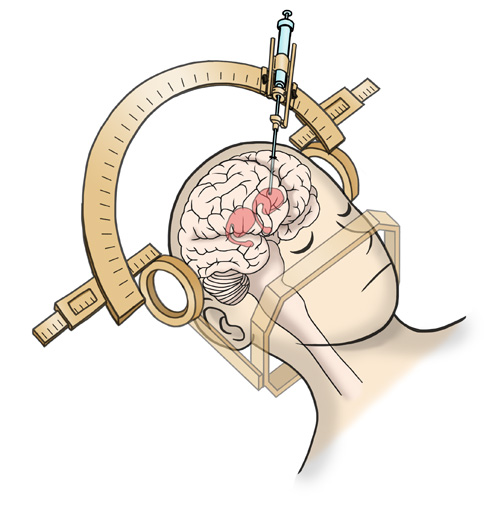by Liza Olkhova
Parkinson’s disease is the second most common disorder resulting in neuronal cell death following Alzheimer’s disease, and arises from the loss of dopaminergic cells in the midbrain. So far, treatment strategies have focused on replenishing the lost dopamine to improve patients’ motor symptoms such as resting tremor and muscle stiffness. These medications, however, may result in unpleasant side-effects.
Pluripotent stem cells are capable of differentiating into many different cell types, such as neurons, cardiac cells, etc. Generation of induced pluripotent stem cells (iPSCs) from adult cells, such as fibroblasts, and their subsequent differentiation into dopaminergic progenitor cells has been achieved at the Center for iPS Cell Research and Application (CiRA), Kyoto University. This technology would give a hope to not only compensate for a decreased dopamine neurotransmission, but to actually replenish the number of neurons that generate this neurotransmitter in the area of the brain affected in Parkinson’s.
Researchers at Kyoto University injected iPSCs-derived dopaminergic progenitor cells in the brains of macaques that were previously treated with a neurotoxin that causes Parkinson’s-like motor features. The grafted cells were not only able to survive, but to grow out its projections into other brain regions involved in movement. This led to amelioration of primate’s reduced motor functioning.

On the 1st of August 2018, a human Phase I/II trial was started in Japan to test the safety and efficacy of these cells in seven Parkinson’s disease patients by injecting the same brain region, called the putamen, with approximately five million iPSCs-derived dopaminergic progenitor cells (image). The cells will be injected into the putamen on both sides of the brain using stereotaxic equipment. Patients will be observed for two years during this trial and will be given immunosuppressant therapy in the case of transplant rejection.
The major concern surrounding such cell replacement therapies is a possibility of cells becoming tumorigenic; however, the original study reported no tumours formed in the macaque brain over the two-year time frame.
Cell replacement therapy could hold a promising potential to become a cure for Parkinson’s disease by directly restoring the dopaminergic neurons lost from the brains of patients, provided that clinical trials can prove the method’s safety and efficacy.
Please check out the following links for more information:
“‘Reprogrammed’ stem cells to be tested in people with Parkinson’s”
“Human iPS cell-derived dopaminergic neurons function in a primate Parkinson’s disease model”